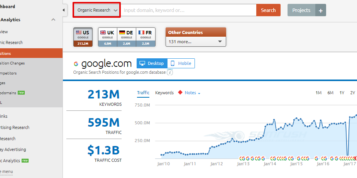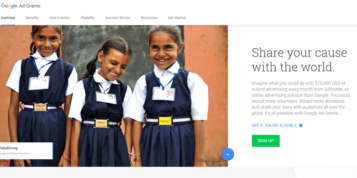At SXSW, Matt Cutts said Google will be introducing an algorithm change over coming weeks, which will penalise websites that are ‘over optimised’. The goal of this is to make the search landscape a fairer place for sites that provide great content but don’t have the resource to execute an SEO strategy. However, this announcement may sound particularly unfair to those businesses who have taken the trouble (and spent the money) to understand what search engines want and therefore do their best to rank well for terms significant to their offering. After all, Google has historically recommended certain activities to professionals in the industry – effectively we concentrate on certain areas of SEO because Google has indicated which best practices to follow. In the next few weeks the task for many will be working out the new definitions of optimised versus over optimised.
Whilst this might initially sound like doom and gloom, my gut feeling is that whatever changes come will build on Google’s last major update, Panda, which was ultimately beneficial to those sites that provide good content to its readers. Panda concentrated on Google being able to serve the highest quality content, so sites that published articles, often without any quality assurance process, suffered in the results pages. This upcoming update is likely to use the essence of Panda and take it one step further, penalising sites which follow a purely keyword driven strategy – that is, they think of their keywords and write content around it, resulting in a stuffed page that doesn’t have the requirements for readers in mind.
Nevertheless, as is usual in these times, nobody but the powers of be at Google know exactly which updates will focus on what and at what time! What is clear is that now is the time to review your website and ensure your site isn’t stuffed with keywords – you know who you are – and be honest with yourself, is your content really up to scratch? The following are a few pointers of where to begin and how you should approach an audit of your website at this time.
Navigation
Different people will come to your website wanting different things so, for example, somebody may land on your site from a search engine but they would like to next look at the full range of services you offer whilst another may want to read what your clients or customers say about you. You can see the pages that people visit through Google Analytics to get an idea of their journey and how long they stay on each page. Do these pages have good calls to action, allow easy navigation to other parts of the site and are they saying the right thing? If a visitor can’t find what they want quickly, whether that’s your phone number or a specific product or service they will no doubt click the back button and choose another site from the search engine’s results pages. Every bounce is a potential customer or client lost.
Internal Links
Navigation can not only be through the main menu structure but also through internal links within your copy. This assists your visitors with navigation and as Google crawls the internet through links, it also assists your SEO, but don’t overdo it; as with most activities within SEO, like the inclusion of keywords on a page, moderation is key, especially since Google may see these efforts as ‘over optimisation’. The words that you hyperlink are recognised by Google so it will help if they are relevant to the linked to content, which is obviously also important from a user’s point of view.
Copy Text
In anticipation for Google’s next update, make sure you look at your SEO landing pages carefully and re-write any keyword stuffed pages. Or better, ask someone who is not so familiar with your site to give you their opinion if it reads well and if relevant information is present, based on the fact that they have landed there for the very first time from ‘X’ keyword. It isn’t just Google that finds keyword stuffed pages unsatisfactory, website visitors will find badly written pages, often pages written to lure search engines, off putting. The way of viewing a content driven strategy as opposed to a keyword driven one is thinking of it like this; if you write what your clients or customers want to read then your keywords (those words and phrases that people will enter into a search engine to find your type of business) will be included naturally. When was the last time you reviewed all of the text on your pages? Maybe when your website first went live? Information may have changed, through experience you may now want to word things slightly differently or has your business evolved so that your site now doesn’t properly reflect your offering? Once you have reviewed the whole site, you can then ensure that certain key words or phrases are naturally included and if not, ask yourself why. Is it because they shouldn’t really be your keywords at all or do you need create some new pages to accommodate certain messages, which will then include your missing terms?
Backlink Profile
As links that point towards your site are paths for Google to crawl the pages, they are a key signal for the search engine. At its most basic level, if people are creating links to a webpage, it means that it is good, quality content that is worth pointing out (sharing/recommending) and it is relevant to the page that has linked to it. By using any number of tools that analyse where your website links are coming from, you can ascertain whether you’re lacking links for these reasons. For example, if your links are from directories that you subscribe to or are paid links from bloggers, they aren’t providing much relevance and therefore much value. Understand where you need to improve you links, for example through online PR, from suppliers’ websites or blogs that want to write about you because they like your business, not just because you’re paying them.
Meta Information
Review the ‘back-end’ of your site to make sure elements such as your page titles and image titles are relevant to the content on the page. Image alt tags should be an alternative textual explanation of the image but they can also reflect the message you are trying to convey through that image and the page as a whole. Meta descriptions should clearly and concisely describe what’s included on the page to assist Google but as they are displayed in the search engine page results (under the title and URL) you should be using them to invite people to click to your site. Again, be warned that the page’s content must then live up to the expectation of the search user who has read the meta description as a page preview.
Whichever changes Google makes in the coming weeks or months, remember to optimise for your readers and don’t lose sight of their experience as a site visitor through worrying about using X number of keywords on a page for Google.





